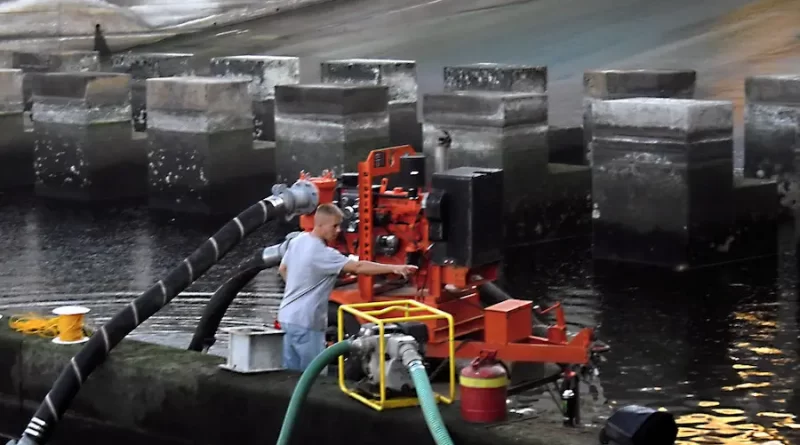The Ultimate Guide to Mechanical Dewatering
Mechanical dewatering separates sludge (residual sludge from wastewater treatment plants or fecal sludge from on-site sanitation) into liquid and solid parts. It reduces the volume of the waste, making it easier to transport and store. Several ways to achieve this include filtration and compression using belt presses or centrifuges.
What is Mechanical Dewatering?
The dewatering process separates sludge (residual sludge from wastewater treatment plants or fecal waste from on-site sanitation) into liquid and solid parts, making it easier to transport. This is done through mechanical means such as plate & frame, belt, centrifuge filter presses, or by pumping into geotextile dewatering bags. It also reduces storage, handling, and transportation costs to compost or incinerate.
However, dewatering has its challenges. For example, hydraulic dredging can displace native plants, disrupt the aquatic habitat, and require substantial energy to operate equipment to drain water bodies. It also requires a lot of space to construct ramps or rehabilitate lakes or ponds and a crane to hoist the dredge through buildings, sidewalks, and other community infrastructure.
Despite its drawbacks, the cost-effectiveness of dewatering is widely recognized. Nevertheless, it is important to remember that dryers and evaporators consume the most energy of all dewatering technologies. Proper instrumentation and controls to track product flow, moisture content, and energy consumption can help optimize the performance of these devices.
How Does Mechanical Dewatering Work?
Mechanical dewatering separates sludge (residual sludge from wastewater treatment plants or fecal sludge from on-site sanitation such as septic tanks or pit latrines) into liquid and solid parts. It does not treat the sludge but removes water, making it easier and less expensive to transport or handle for composting, incineration, or disposal in a landfill. Mechanical dewatering is achieved using belt filter presses, centrifuges, or physical processes like drainage and drying beds. Chemical dewatering agents like coagulants and flocculants can also aid it.
The sludge is drained in large, open-air drying beds, which are often made of sand or gravel, although they can be paved. The sludge slowly dries in the sun and air, allowing water to evaporate and leaving behind the dry solids.
What are the Benefits of Mechanical Dewatering?
Dewatering separates sludge (residual sludge from wastewater treatment plants or fecal sludge from on-site sanitation) into liquid and solid parts, which reduces handling costs and makes it easier to transport compost (see also organic digestion), incinerate (see energy waste) or dispose of in landfills. It is often combined with chemical (coagulants and flocculants) or biological treatment to remove pathogens. It can be accomplished by mechanical means like plate & frame, belt, or centrifuge presses, filtration in filter bags, or by physical processes like letting the sludge evaporate in drying lagoons.
Utilities should thoroughly investigate potential dewatering systems by visiting/inspecting similar installations, performing pilot tests with full-scale units, and evaluating equipment performance data. Pilot testing can help obtain the maximum solids loading on a dewatering device and other important design and operational parameters, including belt speed, gravity force, chemical dosages, and filtrate quality. In addition, careful attention should be focused on monitoring energy consumption due to the drying process (evaporators and dryers are the largest energy consumers in a typical dewatering system).
How Can Mechanical Dewatering Help Me?
Sludge dewatering significantly reduces the volume of waste, making it much easier and less expensive to transport, handle, store, or dispose of. It also makes it possible to use the sludge for other purposes, such as soil enrichment, biogas production, or energy recovery.
Mechanical sludge dewatering can be done with plate and frame, belt, or centrifuge presses, pumping into geotextile dewatering bags, or by allowing it to evaporate in drying lagoons. However, these processes do not treat the sludge, which will still contain pathogens and other pollutants.
Since dryers and evaporators consume the most energy, optimizing upstream mechanical dewatering processes is often more cost-effective to achieve higher dry matter contents before they reach the dryers. By utilizing the right sludge dewatering equipment, it is possible to save thousands of dollars annually in energy costs. The resulting savings can be used for other investments, such as energy-efficient pumps and fans, or even to offset the operating costs of the dryers.



